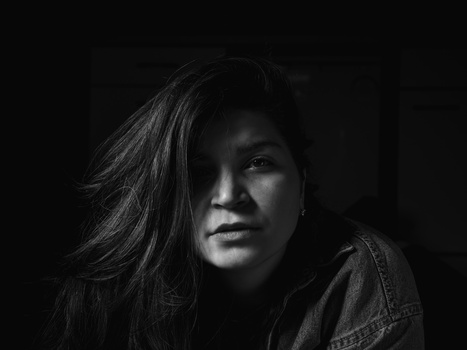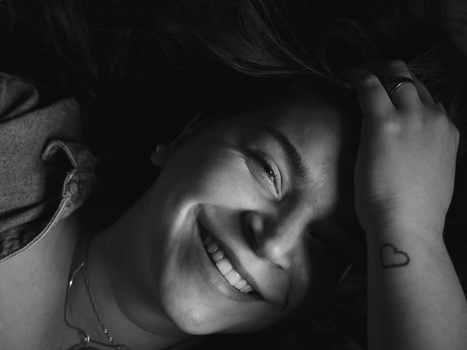Many dream of having one, yet most can’t ever afford one. What makes the Hasselblad X2D 100C so special? Should you even think about getting one? Who is it for, anyway? There are quite a few questions I had when I was getting this camera, and in the few weeks of using it, I got some answers.
An Absolute Beauty
There is no denying it. The Hasselblad X2D 100C is a gorgeous camera. Not just to look at. The sharp edges, the full metal body, the slight curves around the viewfinder, the minimalistic approach to the buttons, and the unique and definitely stand-out orange shutter release button with an impressed signature “H.” The designers weren’t designing just a camera but THE camera to want to experience. Once you pick it up, the feelings magnify. It feels just right. The grip is perfectly pronounced on the front and the back, respectively, for a secure hold with no fear of dropping it. The entire body feels hefty, almost heavy, but in a good way. It feels substantial. That’s the word I was looking for. You can confidently tell that you’re holding a camera of the utmost quality and a serious price tag. There aren’t many digital medium format manufacturers, and while there might be more capable competitors out there with better AF, lens selection, or a plethora of other features, the X2D is often called the Leica of medium formats. Rightfully so.
The design builds on the previous iterations, the X1D 50C and the X1D II 50C, yet it improves the design in many aspects. Gone is the pop-up PSAM mode dial. It has been replaced with a much more usable and sleeker-looking top screen displaying your stats, battery levels, or exposure info. The back of the body now features a tilting LCD. The tilt mechanism itself feels strong. You need to exert a certain amount of force to get it to move. It feels scary at first. There are two positions of the screen facing up, with the second one not being entirely obvious until you say “screw it” and pull harder. This helps tremendously when shooting from lower angles. However, the top of the LCD is covered by the protruding viewfinder a bit, so you can’t use it too low as you are missing out on roughly a quarter of your shot.

You won’t be able to find many buttons on the outside of the body. Hasselblad has gone with the minimalist yet effective approach with the X2D 100C. Your basic aperture, shutter speed, ISO, and mode controls are the main ones you’ll really need, so they occupy the prime locations on the camera. The rest is mainly done via the touchscreen menu. But do not worry. This is not your average touchscreen experience we know from other camera manufacturers. At the moment, no camera brand, maybe except Canon, has been able to make a comfortable touch-enabled menu experience that feels fluid and not as an afterthought. Well, that is when Hasselblad steps in. The touch interface of the X2D is smooth, easy to understand, and I’d say intuitive. It feels like a modern smartphone. And I mean that in the positive sense. The only downside might be being limited to only using the touchscreen. Any other way is not present.
Tons of Detail, No Room for Errors
There is absolutely no denying the sensor inside of the camera is spectacular when it comes to detail. It is a 4:3 aspect ratio 102-megapixel bayer BSI CMOS we’ve already seen used in the Fujifilm GFX 100 and GFX 100S. Its newest use is in the recently released Hasselblad 907X & CFV 100C combo. The sensor comes with embedded phase detection autofocus points for faster and more accurate focus acquisition. The AF speed has been improved considerably over the X1D II, but it is still not a fast-focusing camera that could rival today’s mirrorless bodies of smaller sensor sizes. For the first time in a Hasselblad body, we get to enjoy face detection, which does help, but we are still missing a key feature for that to be useful in a more dynamic environment. Continuous autofocus was nowhere to be found in the menus. Having to refocus when shooting a subject in motion constantly was a bit of a chore after a while, but I guess if they couldn’t make it a perfect 100% working tracking mode, it would just seem half-baked. Maybe a firmware update will let us track faces or even subjects in the future.
If you’ve ever used a medium-format digital camera or any camera with a resolution north of 60 megapixels, you know how impressive the sheer amount of detail captured is. The models in my photographs from the X2D are beautiful, and you’d be hard-pressed to find any flaws in their faces. But at such a resolution, you can see the unseen. Literally. And me being me, I distance myself from any kind of retouching in my work as it feels disingenuous to me. I like to present my photographs as they were taken, with a few color adjustments. I am lucky the models in my shoots are happy with themselves. I can only imagine how the conversation would go with someone a little more insecure. The amount of touching up and erasing the smallest hairs and invisible wrinkles would take forever.
The native ISO ranges from 64 to 25,600, and considering the resolution, the noise levels are more than manageable. One thing that Hasselblad does right is color and exposure. I have yet to take a photograph with a Hasselblad camera with either the exposure or the color not being spot-on. The white balance is almost always perfect, and the colors in the files are always exactly as they were in the scene at the time of capture. If color accuracy is what you are after, there is probably no better alternative than a Hasselblad. However, it might come as a surprise it is not for everyone. I’ve been a Fujifilm shooter for over a decade and having shot with the famous film simulations, I not only missed the character of my files; I downright did not enjoy editing the images as much as I do with my Fujifilm files. I am well aware it is only a personal preference, but it is something to keep in mind when choosing your next purchase. Be ready to put the work in to get your desired look.
One huge downside that could easily be addressed via a firmware update is the inability to set the camera to monochrome whilst shooting. I know raw files save all of the data and a preset does not matter. But I always set my cameras to monochrome to be able to concentrate on the composition and light in the viewfinder rather than be distracted by the color.
Internally Nearly Perfect
The camera comes with a built-in mechanical 5-axis stabilization system capable of up to 7 stops of compensation. It is not a first in a medium-format body; it is a first for Hasselblad, though, and a very welcome addition. Especially for handheld shooting as 102 megapixels are unforgiving. The single CFexpress Type-B card slot should not worry those wanting backup for their workflow. The X2D 100C is one of the few cameras designed with an internal memory module that is actually functional and not just an afterthought. The body contains a 1 TB SSD, which lets you shoot regardless of whether a memory card is present. However, the camera does get pretty hot when in use. I’m not sure whether it is the CFexpress card, the SSD, the processor, or anything else, but even when I shot around two to three shots a minute, it warmed up significantly to the point of me getting worried. My best guess is that the body is so tightly packed there is not much space for proper heat dissipation. It never stopped working, though, and no overheating message popped up.
The viewfinder is on the one hand really nice to look through, thanks to its high resolution of almost 6 million pixels; on the other hand, it takes its sweet time to turn on. If you have the automatic display switcher on, you will spend almost two seconds just looking in the dark before the viewfinder finally decides to pop in once you put the camera to your eye. It was a non-issue when I shot tethered through Phocus as I only used the rear LCD and the computer screen, but whenever I was looking through the viewfinder, often I had to instruct my model to just hold that pose until I was ready to actually compose and shoot. It is clear the X2D 100C is no fast-paced environment camera. I even tried a bit of street photography with this beauty, and after a few missed opportunities, I opted to just shoot using the rear LCD instead of having to wait each time.

In a Quick Flash
If you’re a flash/strobe shooter, chances are you care a great deal about your sync speeds. Nowadays, most cameras get you somewhere in the ballpark of 1/125 s to 1/400 s. Anything faster than that and most cameras need HSS for the shutter to be any faster, which lowers your overall flash power and can introduce motion blur into your images. That is if you’re using a plain old focal plane shutter. Well, the Hasselblad X2D 100C does not have a shutter mechanism built-in. Instead, it counts on the leaf shutters built into the lenses. And those shutters are capable of sync speeds of up to 1/4000s with no need for HSS whatsoever. This way you get to freeze motion up to the maximum shutter speed while utilizing the full power of your flash or you can combat strong ambient light without having to resort to using HSS. Of course, the X2D is not the only camera capable of these sync speeds. Pretty much any modern leaf shutter camera can do so, like the recently released Fujifilm X100VI, or the previous generation X1D II 50C. The only camera capable of shooting considerably faster with a full power flash at the time of this article is the Sony a9 III thanks to its global shutter but not at the level of image quality the Hasselblad gives us.
What I Liked
- A beautifully designed and built body
- Premium feel
- Beautiful viewfinder
- Lots of detail in the files
- Great and accurate white balance and color reproduction
- Built-in 1 TB SSD
- Fast USB-C port
- Versatile top LCD
- Tilting rear LCD
- Firm-feeling shutter release button
- Comfortable grip
- Intuitive touch interface
- Sync speeds up to 1/4,000 s
What I Disliked
- Slower viewfinder activation time
- The camera gets hot even in cool and slow conditions
- Lack of monochrome preview
- The battery wasn’t bad but wasn’t long-lasting either
- It takes a few seconds to turn on
Glad It Exists
The Hasselblad X2D 100C is, as I’ve already mentioned a few times above, a gorgeous camera and a beautiful machine. The image quality it delivers is spectacular. But to fully utilize it, you have to know what you’re doing, and you have to take your time doing so. This is not your average weekend shooter or your holiday clicker. This camera forces you to be deliberate; it makes you think about your shots, and it makes you not just capture but create photographs. It most definitely is not for everyone. The X2D 100C is for a serious photographer who knows the craft perfectly and wants the best result. Don’t expect it to make you any better. But if you’re already a great photographer, it might just push your art to the next level.





























i had wanted to purchase a Hasselblad X1D Mark ii and almost did but someone else managed to purchase it before me on the second hand market. i have been following Facebook posts about the X1Dii and the X2D and some people complain about noise at higher iso levels due to the smaller pixel pitch of the 100 megapixel sensor. i have a GFX 50Sii and really wish that Sony would produce a new 33mm x 44mm sensor with a resolution lower than 100 megapixels with phase detect autofocus and contrast detect autofocus suitable for video. those who choose the 50 megapixel Sony sensor have to settle for mediocre video performance. ( i am aware that the X2D has no video functionality at all )
I agree it does get noisier than the 50-megapickle X1D or the GFX 50S II, but the amount of detail makes up for it. Once you run it through a denoiser like the one in Lightroom it does have more information in it than the 50 mpx files. It would be nice if they developed a sensor with the AF and speed capabilities of the GFX 100 II but at lower resolution than 100 mpx.
Nice article. Thank you. I love the pictures too. You are a great photographer. Camera not bad either. :-)
What a lovely comment! Thank you :)
Great review. I have this X2D and a Nikon Z8. The Z8 even makes coffee! But the X2D is just such a superb camera. Your review says it all. You can sync much faster with the electronic shutter. I have all three of the XCD V lenses. They’re built for the X2D and again, are beautifully built and feel rock solid. The images I get are wonderful. The Z8 is a workhorse. It can shoot anything, anywhere. The X2D brings one back to what photography is about. Thanks for the review.
Really nice set of cameras! There's nothing you couldn't do with those two :)
As a former Hasselblad (500 C/M) I'm very tempted, but can't justify the cost. Yet.
If you still have the 500 body the 907X back might be a nice option 😎 Or even the older 50-megapixel one.
Unfortunately, sold it off a long time ago. Shoot.
It seems when bigger, higher res sensors are discussed, the discussion centres on detail and ability to enlarge. When I work with medium and large format film cameras, it is partially about reducing grain, but more about shadow detail and the ability of the film to produce smooth greys. From what I've seen, digital B&W struggles to render the experience I can create with a lens like a vintage Apo Lanthar and 6 x 9 film. Maybe this new Hassey is approaching that? Reading that the lenses include a shutter... the leaf aspect sounds very flexible for flash, but it also means that every lens may eventually require service vs. including the leaf shutter in the body, thereby freeing up the lenses from this weight and additional complication. Kodak Retina cameras were able to do that 60 years ago. I had a lens shutter fail in the 500CM generation. It locked open, unknown to me, because of the k-chunk the body makes. The results weren't great.